Delivery Is More Important Now Than Ever. And We Have the Delivery Statistics to Prove It.
9 min read

Navigating the shifting tides of business in a world that has been upended by coronavirus is challenging, to say the least. Many companies, both small and large, have had to throw their long-term plans and projections out the window, favoring weekly plans that are more reactionary than forward-thinking. But as the dust settles, hard data and customer insights can help us see the path forward.
We’ve collected statistics from OptimoRoute users across the restaurant and retail industries to give you a better understanding of current consumer trends and help us all prepare for the future.
The statistics:
- Food delivery orders placed monthly with businesses using OptimoRoute rose 19% from February to March and as much as 151% in April.
- Food delivery orders have increased again in May by 31% in comparison to April.
- In total from February to May, the amount of food/grocery deliveries more than tripled compared to the pre-COVID baseline. This suggests a sharp shift towards food delivery across the board.
- In just 10 days in April, food delivery drivers using OptimoRoute have covered as many miles as in all of February (155,673.8 miles).
- Individual drivers saw an average 34% decrease in orders per single driver for the month of March but a 43% increase in miles traveled, suggesting businesses are now covering a larger metropolitan area.
- On average, a single driver had 12% more orders in April compared to March and increased total distance traveled by 171%.
- OptimoRoute clients’ monthly retail orders rose by 9% in March compared to February and has continued to grow by as much as 65% throughout April.
- Retail delivery orders have continued to rise as much as 26% compared to April, or as much as 67% compared to pre-COVID orders in February.
- Text notifications sent to customers through OptimoRoute tripled from February to May. Ten times as many text notifications were sent in April compared to February.
- Businesses using OptimoRoute have reduced the number of hours required to plan by as much as 90% while increasing planning capacity by 200%.
Breaking Down the Data: How Are Industries Being Impacted Globally?
Government officials throughout the world have imposed dine-in restrictions in an effort to slow down the spread of COVID-19. As a result, the demand for delivery within the food industry has skyrocketed. Monthly food delivery orders from businesses using OptimoRoute rose 19% in March compared to February and as much as 151% in April compared to the previous month. Food delivery orders have continued to rise in May. In comparison to April, food delivery orders have risen 31% in May. In total the amount of food/grocery deliveries more than tripled from February to May, compared to the pre-COVID baseline. This suggests a sharp shift towards food delivery across the board.
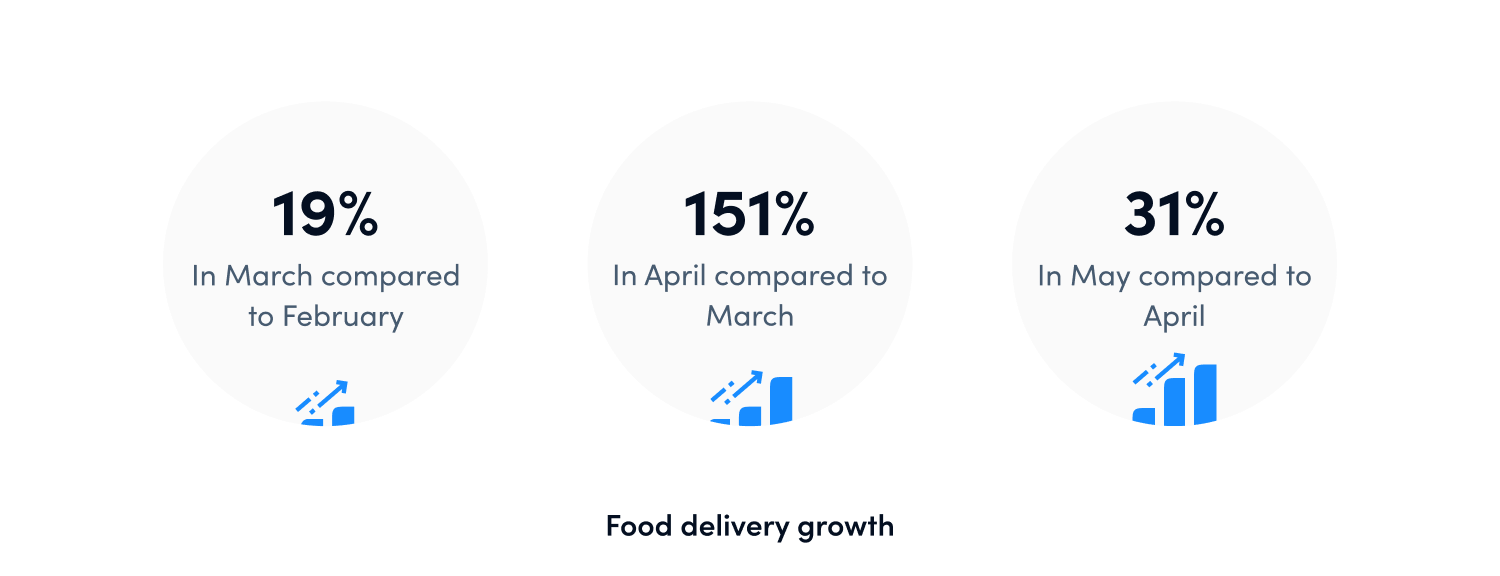
Consumers like Katrina Caringi are having groceries delivered for the first time in an effort to help flatten the curve, even if it’s costing them more money. Caringi, who resides in a rural part of upstate New York, told us she was disappointed that the grocery store she typically shops at doesn’t offer delivery. As a result, she is spending roughly 2x as much on groceries even before the delivery fee.
With limited delivery options available, especially in rural areas, individual drivers are traveling to customers across a greater geographical area, resulting in a 34% decrease in orders per single driver from February to March even though mileage has gone up by 43% suggesting a growth in new customers further across cities. This illustrates a clear need for more local food stores to offer delivery. On average, a single driver had 12% more orders in April compared to March and increased total distance traveled by 171%.
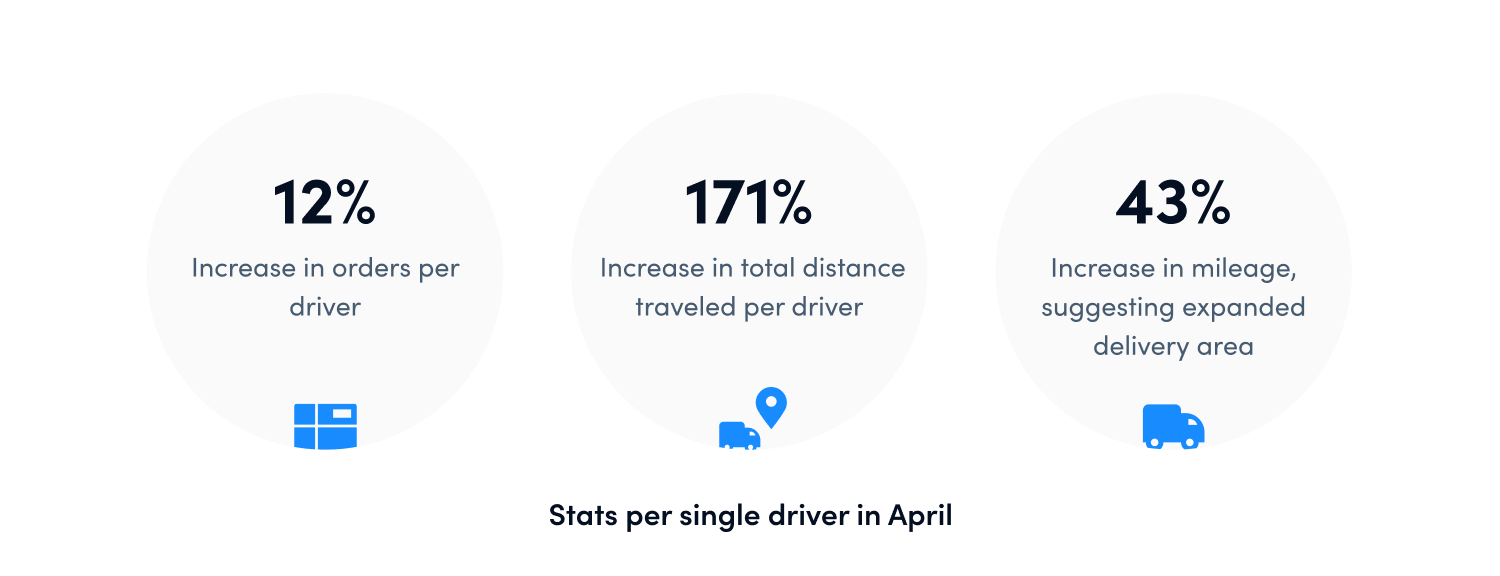
Retail industry
Monthly retail orders placed with businesses using OptimoRoute climbed 9% in March compared to February and have continued to climb by as much as 65% in April compared to the previous month despite global COVID-19 shutdowns and severe economic restrictions being implemented by several countries. Retail delivery orders have continued to rise as much as 26% compared to April, or as much as 67% compared to pre-COVID orders in February.
For countries like the United States, the United Kingdom, and China, MoM in-store retail sales plummeted in conjunction with the onset of the associated country’s coronavirus shutdowns.
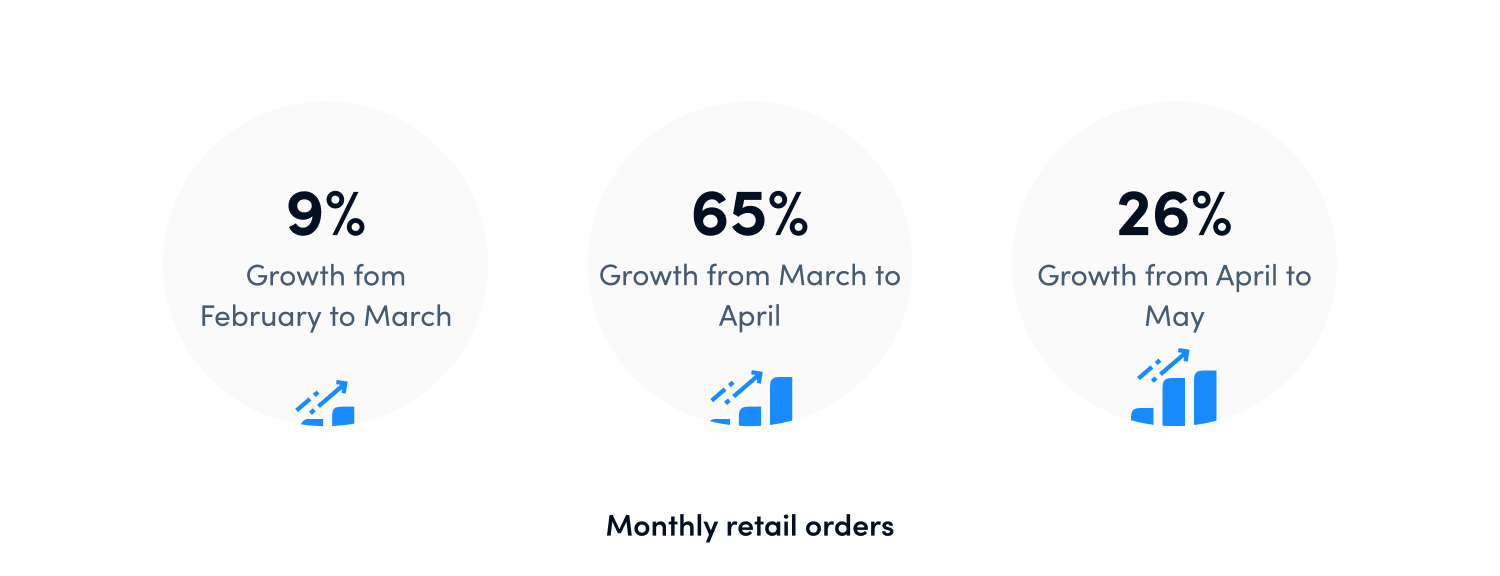
According to the Adobe Digital Economy Index, United States eCommerce sales grew by 25% from March 13 to 15 (compared to March 1 to 11). With retailers being forced to close their doors to foot traffic, more business is moving online, and delivery is becoming the new normal.
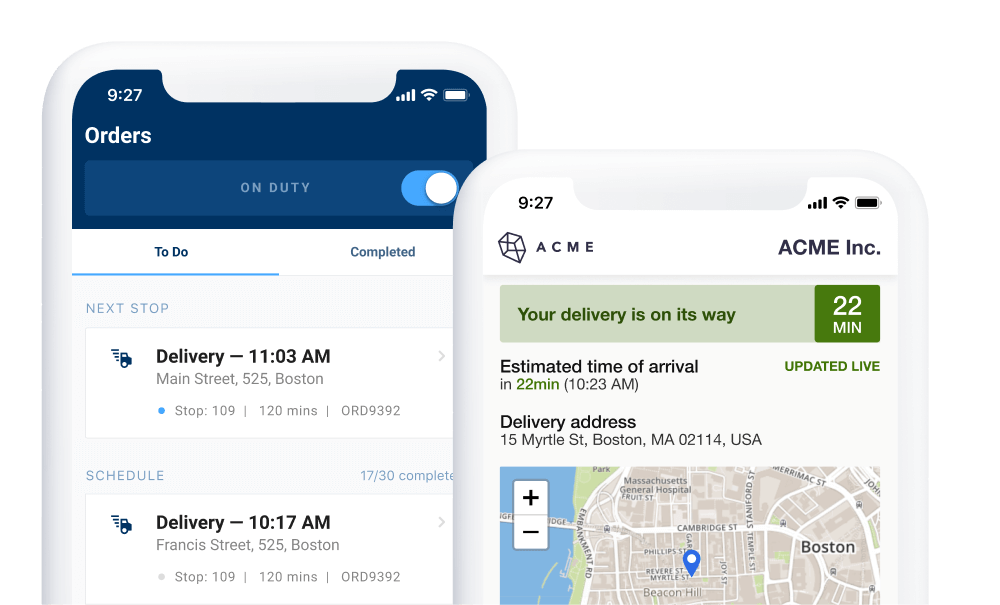
Reduce your operational costs by 30%
Increase delivery capacity by 43%
Plan 7x faster
How Small Businesses Have Adapted by Putting Customers First
While customers are adhering to social distancing, businesses are finding new ways to connect with their patrons during quarantine. Digital touchpoints have become increasingly popular across all industries.
Katrina Caringi told us she likes getting grocery order updates by text. “You’ll get a notification if there’s anything that’s not available or that your shopper would need to switch out. I like that. If you’re busy and you don’t want to get those messages when somebody is shopping for you, you can opt out, which is handy, too.”
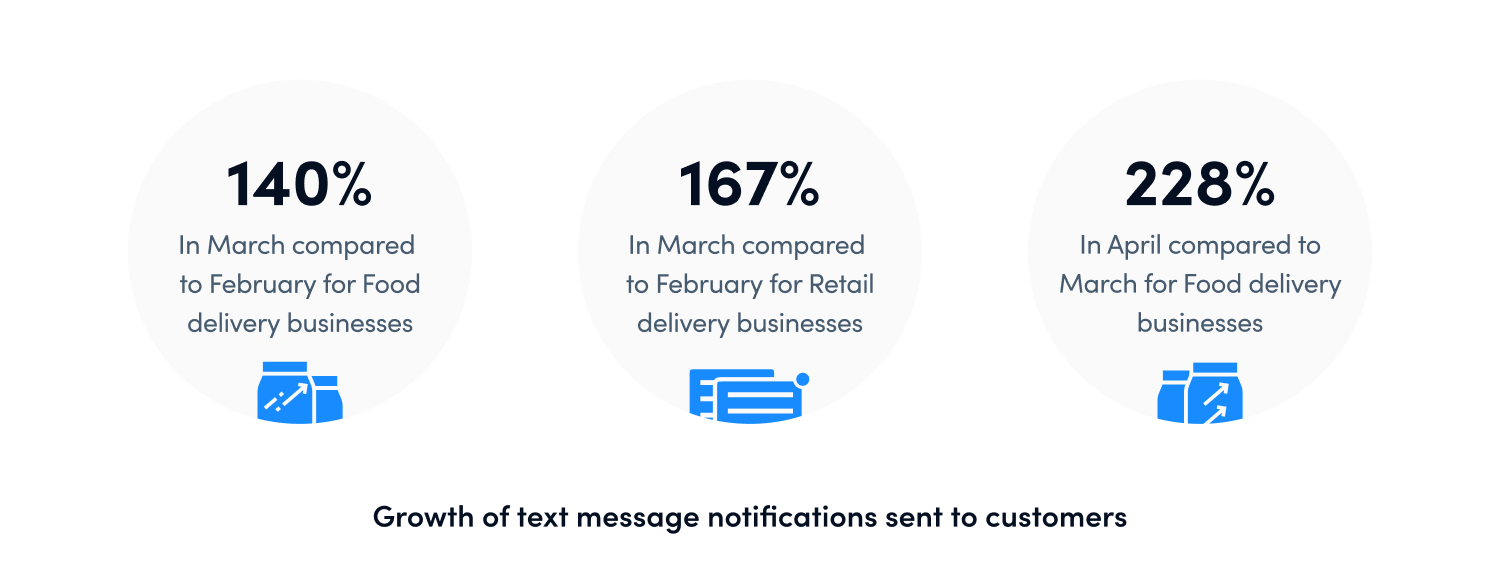
At OptimoRoute, we’ve seen a significant increase in text notifications being sent to customers. The text messages contain a special link allowing the customer to see the driver on the map and the live updating arrival time. OptimoRoute calls this Realtime Order Tracking.
Businesses delivering food sent 140% more text notifications to customers in March compared to February. That number increased additionally by 228% in April compared to March.
In fact, 167% more SMS notifications to customers were sent in March compared to February.
We asked three small businesses how they’ve adapted to an increase in demand (and an increase in miles traveled to customers) amidst coronavirus shutdowns. Their answer? An increased focus on customer experience.
Oco Meals
Oco Meals, a zero-waste meal delivery business serving the greater Vancouver area, opened their business to customers just before coronavirus-related shutdowns began taking effect in Canada. Luckily, having more than a year of experience running delivery services via their sister company, Gomae Meal Prep, Oco Meals was able to meet the accelerated demand early on.
Emil Prigge, product engineer for Oco Meals, explained that one of the most important features for his business has been text notifications, which are sent to customers through OptimoRoute with live tracking. These notifications let consumers know precisely when their order will arrive. Emil told us that this feature helps Oco Meals build trust with customers. “It’s a promise. We promise to be here at this time. And then they [the customers] can always check in on that promise.”
Local Roots NYC
Prior to the onset of coronavirus-related shutdowns, Local Roots NYC used pickup points to distribute farm-fresh foods to the vast majority of their customers. Their main distribution channel was a network of brick-and-mortar locations (cafes, restaurants, and offices) that customers could visit to retrieve their order of meat, produce, and other goods sourced from local farmers.
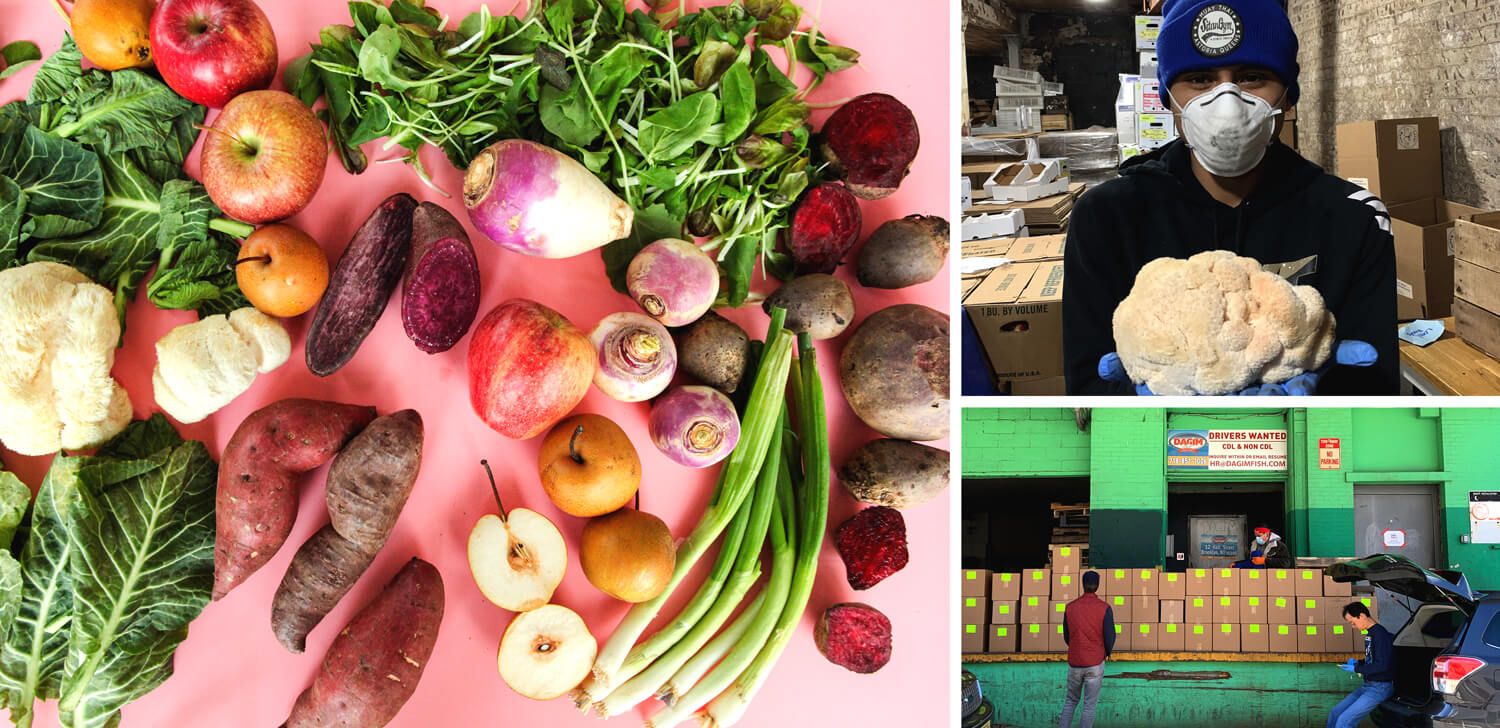
When social distancing efforts went into effect, and these pickup points started closing, Local Roots NYC acted quickly to expand their delivery service. Camryn Hellwarth, Local Roots’ director of programming and community engagement, explained that “when all those places started closing down, we really quickly needed to find another way to still give people access to really great, flavorful nutrient-dense food. The safest way to do that was through home delivery.”
Over the next month, Local Roots NYC used OptimoRoute to scale up from delivering approximately 50 orders per week to delivering over 1,000 per week. They did this while implementing social distancing protocols, such as contactless deliveries. Local Roots NYC kept their customers at the forefront of all of their decisions while adjusting to the effects of COVID-19, and it has paid off for everyone involved.
“There’s a huge amount of gratitude from our community,” Hellwarth said. “People are grateful to still be able to have access to local and high-quality ingredients at this time. There’s a new realization of the importance of supporting your local farmers and your local economy, and connecting to the community in that way. We’ve strengthened our bond, just virtually.”
GrassRoots Lawn Service
Melodie Brown, half of the husband and wife team that founded GrassRoots Lawn Service, shared with us that this has been the “busiest spring we have seen in a very long time, which we consider a huge blessing.”
Brown and her family pride themselves on delivering personalized service to all of their customers in central Pennsylvania, and this year they’re taking extra steps to deliver on that goal. GrassRoots reaches out to their clients every March when the lawn care season starts, but this spring, they made their communications more personal.
GrassRoots sent out a newsletter and called clients to explain the safety precautions they would be taking, including providing electronic invoices and accepting payments over the phone to reduce physical contact (and papers being passed from person to person).
Brown and her team also offered to lend a hand to customers who needed extra help during social isolation. Brown told us, “we have a lot of elderly clients, so we also offered to pick things up and drop them off. We’ve had a lot of customers call us just to talk.”
Delivering a personalized customer experience has earned GrassRoots Lawn Service not only the trust of their existing clients but has also contributed to a more than 7% increase in their client base this season.
How to Compete in a Socially Distant Economy
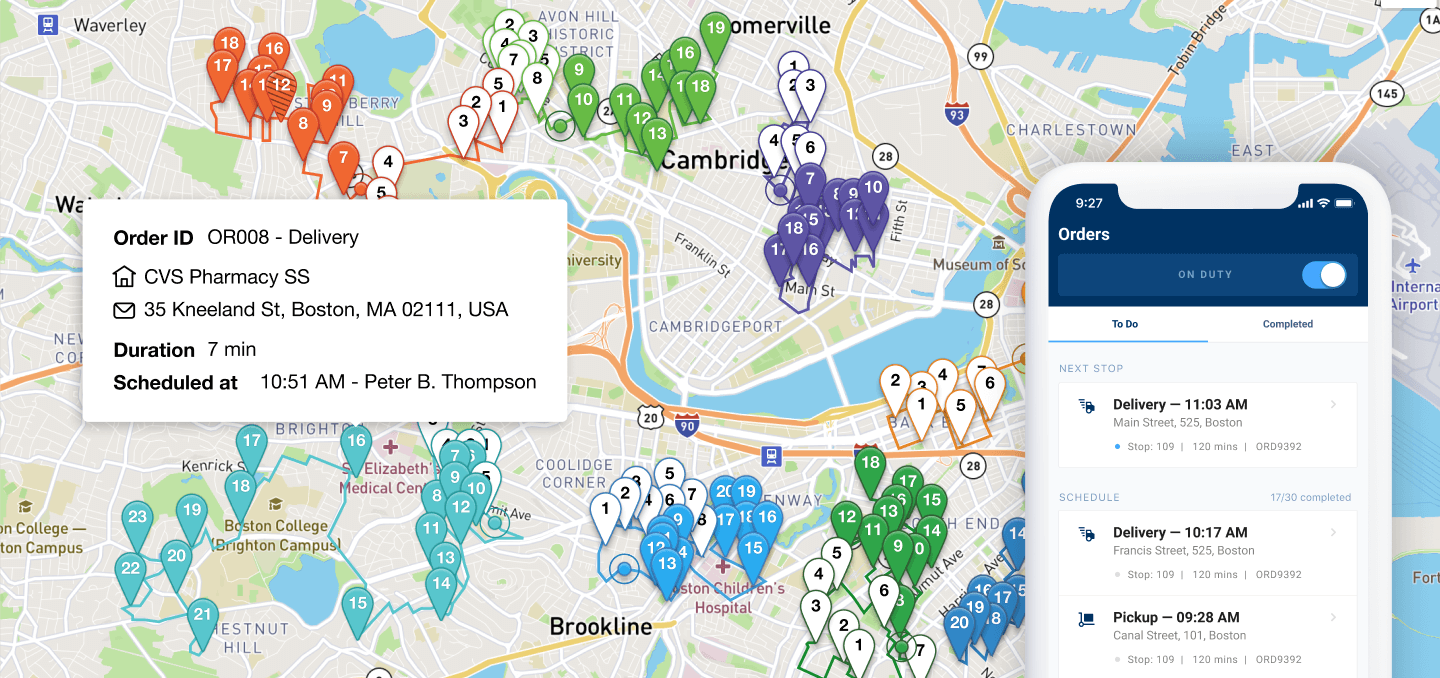
Businesses that have been able to scale up home delivery and maintenance services quickly, while honing in on customer experience, are weathering the storm. OptimoRoute is helping businesses all across the world adapt in these unprecedented times. If you are thinking of starting or scaling your own delivery, here’s how OptimoRoute can help:
Scale quickly
If you’re trying to scale your delivery or field operations quickly, time is truly of the essence. OptimoRoute cuts down on route and delivery planning time, giving managers more time to focus on strategy and high-level planning.
Emil Prigge of Oco Meals switched from manual route planning to using OptimoRoute, and the payoff was huge. Prigge shared that, “It was probably taking me four or five hours of just sitting down and doing manual planning. Now we’re doing more than 3x as many orders and it takes me about half an hour.” OptimoRoute is able to assign orders based on individual vehicle cargo capacity, so space and routes are optimized.
Route optimization software reduces training time for delivery teams, which means new drivers can get out in the field faster. According to Prigge, “OptimoRoute enables me to bring on drivers and it really is intuitive. Drivers don’t have to know exactly where they’re going because I can have a system programmed which lays it out for them, so they just need to know how to use the app.”
Optimize capacity and workloads
In a time when drivers and service providers are covering more distance, it’s imperative that everyone in the field is taking the most efficient routes. OptimoRoute enables drivers to maximize order capacity while minimizing miles traveled and fuel expenses and helping managers cut down on overtime.
Workload balancing allows fleet managers to make strategic decisions when it comes to order assignments. Delivery routes can be prioritized for lowest cost, evenly distributed workloads, or a balance of the two depending on what is best for your company.
Provide an elite customer experience
Text notifications and real-time tracking are helping businesses bridge the physical gap caused by social distancing. OptimoRoute customer notifications can be customized and let patrons know precisely when their order will arrive without employees needing to manually check in at every stage.
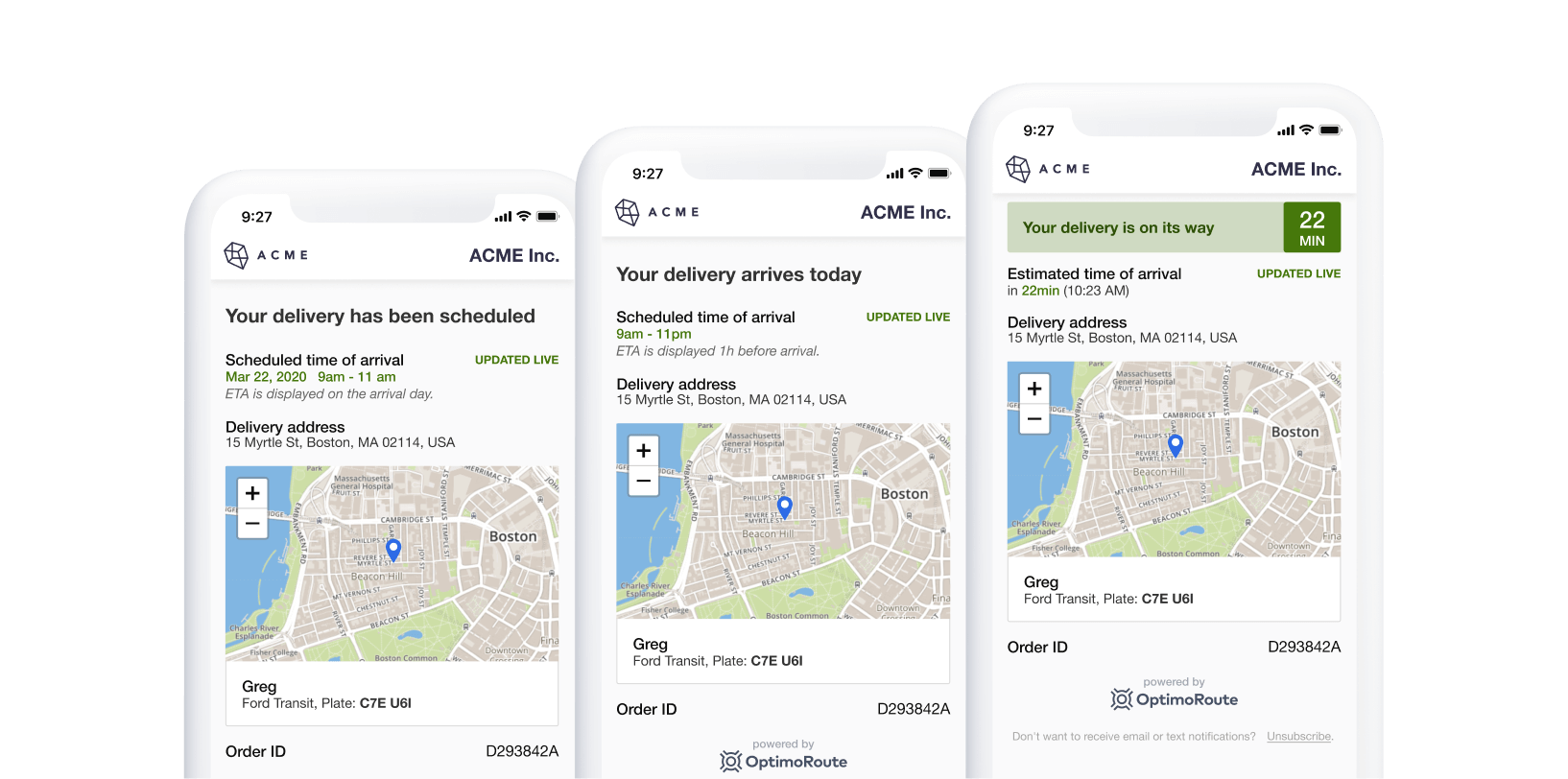
Route optimization software has also been shown to increase the number of on-time deliveries for businesses of many types. Hardie’s Fresh Foods, a fresh food and produce distribution business in Texas, has seen an increase in their on-time delivery rate from 89% to 94% using OptimoRoute, and that number is growing at a rate of 1.5% MoM.
Decoding Post-Pandemic Consumer Trends
While Caringi hadn’t used grocery delivery services prior to COVID-19, she is enjoying the time-saving benefits. “I think it’s super convenient, everything start to finish. You know what you have already ordered, so if you want to order it again, it’s a click of a button.”
The data clearly shows that delivery has taken off as a result of coronavirus and shelter-in-place orders, and businesses that use this shift in customer behavior to provide a great customer experience may see a long-term increase in revenue. If you’re still wondering how to add delivery to restaurants you manage, check out our blog post on it.
We asked Caringi if she sees herself continuing to order grocery delivery even after the risks involved with going to the store have passed. Her response? “Yes, I would do it again. I will continue [using grocery delivery] after COVID.”
This is becoming the norm, and many customers are expecting same-day or next-day delivery from their food delivery services. Does your business model support this type of fast delivery? If so, how can you optimize your delivery process for even better customer satisfaction? If not, it may be time to incorporate self delivery into your online ordering process.
Regardless of where your delivery company is at, OptimoRoute can help optimize it!
Try OptimoRoute™ for Free
No installation or credit card required


